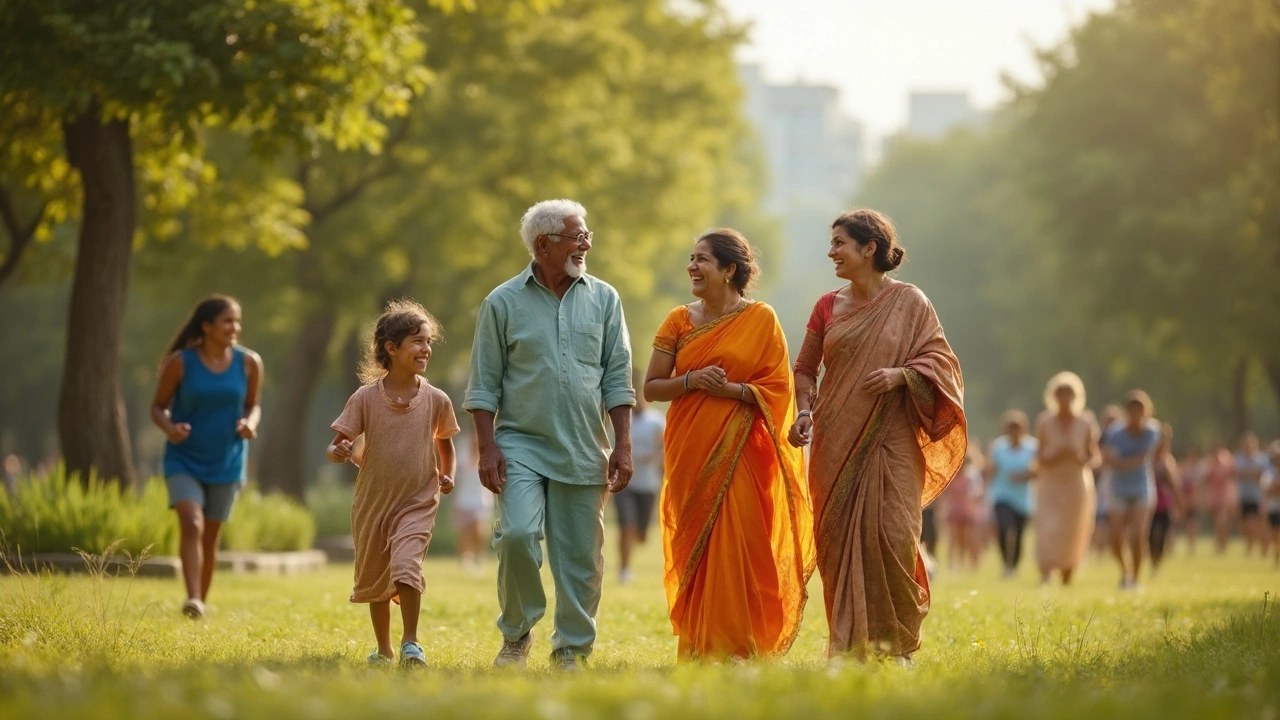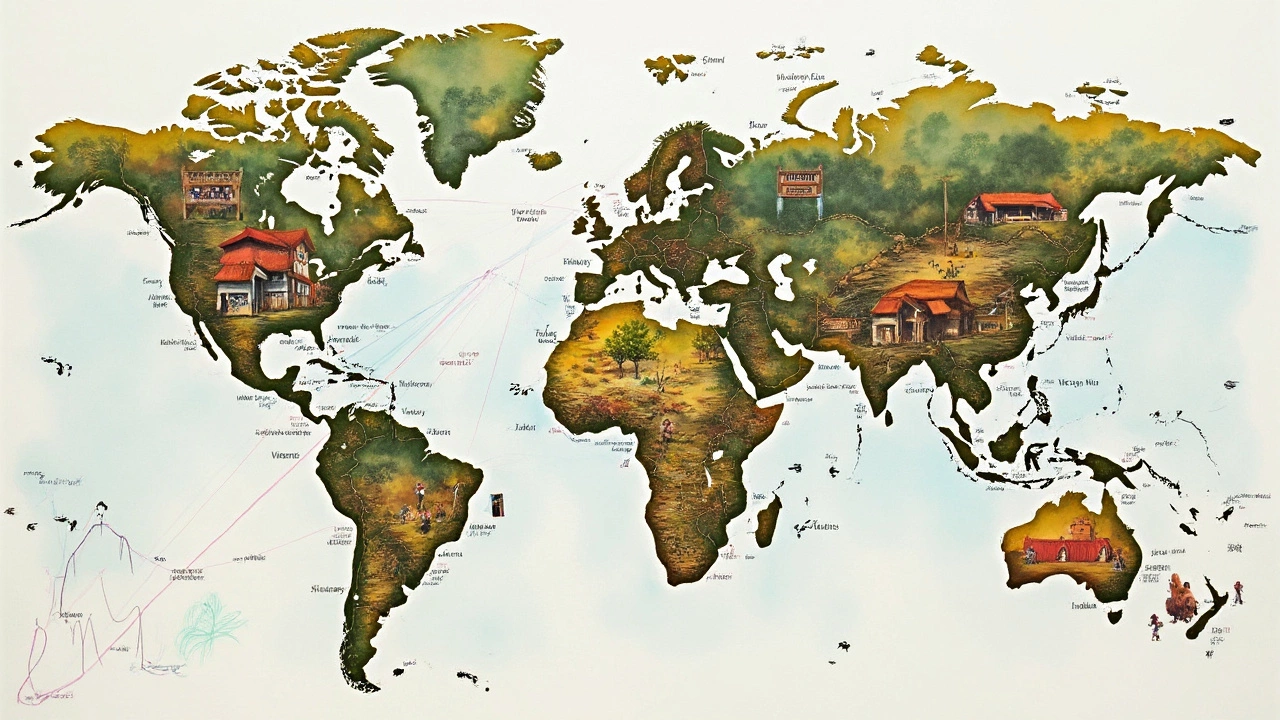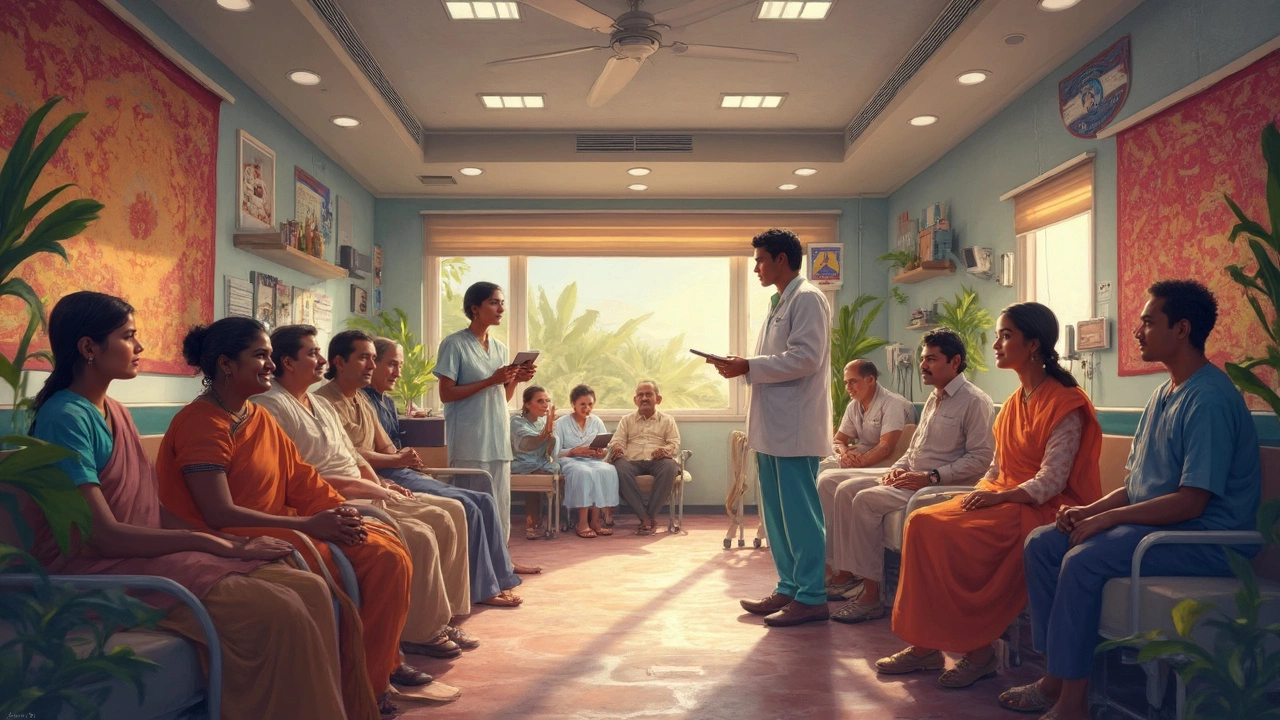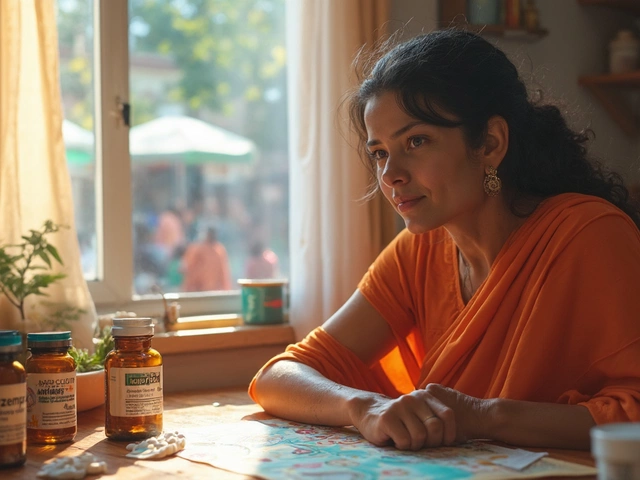
Everyone hears rumors—Japanese people live forever, Mediterranean folks dodge heart attacks, or Icelanders barely see a doctor. If you’re looking for the healthiest race with medical tourism in mind, you’ll find loads of opinions. But here’s the truth: it’s not that simple.
Health isn’t a lottery that one group wins. It’s more like a recipe, mixing genetics, lifestyle, food, finances, stress, and plain luck. If you want to borrow the secrets of long life and disease-free years, you’ve got to look wider than skin color or national borders. Countries with affordable, high-quality care and healthy daily habits might be what you’re looking for as a smart medical tourist.
Stick around, and you’ll get real-world tips for finding those health hotspots—plus a dose of reality about why there’s no single group holding the crown for ‘healthiest’ on Earth.
- The Question of the 'Healthiest Race'
- What Makes Some Populations Healthier?
- Medical Tourism Hotspots: Where Health Thrives
- Lessons You Can Actually Use
The Question of the 'Healthiest Race'
If you Google "healthiest race," you'll run into a ton of articles about certain populations that regularly top the charts for life expectancy, low disease rates, or killer genetics. But the reality? It’s messy. Big-name organizations like the World Health Organization try to rank countries by health metrics, but they look at groups—not races—and even those groups change over time.
Take Japan, famous for its long-lived people. In 2024, the average Japanese person could expect to live over 84 years. Okinawa especially catches headlines with loads of folks reaching 100. But it’s not just about genes—a traditional diet low in processed foods, lots of walking, and strong community ties play a huge role. On the flip side, people who move out of Japan and switch to a Western diet see these numbers drop fast.
If you look at the Mediterranean area, people in places like Italy and Greece stick out. It’s not only the olive oil or fish—they spend time outside, keep stress low, and keep tight family bonds. Again, when they move away and ditch the old habits, the health advantage fades quickly.
How about genetics? Yes, some groups might have a genetic edge against certain illnesses. For example, sickle cell trait pops up more in people with African ancestry for a weirdly practical reason—it helped ancestors avoid deadly malaria. But those same genes can come with drawbacks. No population gets a free pass on all diseases.
Here's a snapshot of some top life expectancies:
| Country | Life Expectancy (2024) |
|---|---|
| Japan | 84.3 years |
| Switzerland | 83.8 years |
| Singapore | 83.6 years |
| Italy | 83.4 years |
| Iceland | 82.7 years |
When you see longevity and health, don’t assume it’s boiled down to race alone. It’s more about where you live and how you live. So if you’re thinking medical tourism can help you chase a "healthiest race" advantage, shift your focus to which countries mix modern medicine with healthy lifestyles. That’s where the real secret hides.
What Makes Some Populations Healthier?
Some places are famous for having people who live longer and dodge chronic diseases. Take Okinawa in Japan, parts of Italy’s Sardinia, and Loma Linda in California—these spots keep popping up in conversations about the healthiest race. But is it all in the DNA? Not really.
Let’s break down what actually keeps these groups ticking:
- Lifestyle trumps genetics: Fresh veggies, fish, and small meat portions are everywhere in longevity hotspots. Regular walking, gardening, and a sense of purpose really add up. No fancy gym needed.
- Social support: Strong family ties and connected communities are a common thread. People back each other up, which actually lowers stress and boosts health—no magic gene required.
- Limited processed food: Most of the healthiest groups eat food close to its natural state—think homemade bread, local veggies, not a lot of factory stuff. That helps keep obesity, diabetes, and heart problems in check.
- Universal healthcare matters: In places like Japan and many European countries, access to regular checkups and needed care is normal. Nobody’s bankrupting themselves just to fix a broken wrist.
Some numbers speak loud. Check this out:
| Country | Average Life Expectancy (years) | Access to Universal Healthcare |
|---|---|---|
| Japan | 84.5 | Yes |
| Italy | 83.1 | Yes |
| USA | 77.5 | No (Partial) |
Genes play a role, but daily habits carry more weight for most people. You can see that when folks move away from their culture’s typical lifestyle—say, Okinawans in Brazil—they often lose their edge. It’s really the day-to-day routine, not the passport or skin color.

Medical Tourism Hotspots: Where Health Thrives
If you’re thinking about traveling for health care, you’re probably wondering: where do healthy people actually live, and can you benefit from their habits or their hospitals? Some countries stand out, not because of one "healthiest race," but because their mix of lifestyle, systems, and clinics makes them magnets for medical tourism.
Japan leads the world in life expectancy. Japanese clinics have a rep for being clean and super efficient, and their focus on check-ups catches illnesses early. People flock there for cancer treatment and advanced surgeries, and you’ll see locals eating a diet loaded with fish, rice, and veggies—hardly fast food territory.
Next, let’s talk about South Korea. It’s the go-to spot for cosmetic and reconstructive surgery, but also offers affordable cancer and cardiac care. South Korean hospitals even have international wings to cater to medical tourism—no language headaches there. And yes, their public health system scores high for accessibility (lots of folks get routine check-ups).
Singapore is another superstar. It’s not cheap, but the healthcare is nearly flawless. They focus on prevention, pushing vaccinations and screenings hard, which keeps hospital stays short. Their medical centers often feel more like hotels, and international patients get fast service. Singapore’s people live long lives with low rates of major chronic diseases.
If you’re after a full health reset, Costa Rica and Thailand are famous for affordable dental work, orthopedic surgeries, and wellness retreats. These places attract folks who want a break from expensive healthcare at home. Costa Rica, for example, has been called a Blue Zone—one of a handful of places where people regularly live past 100. That’s not just genes: it’s slower living, strong social ties, and easy access to fresh produce and sunshine.
| Country | Main Draw for Medical Tourists | Average Life Expectancy |
|---|---|---|
| Japan | Cancer and advanced care | 85 years |
| Singapore | Specialist treatments, surgery | 84 years |
| South Korea | Cosmetic, cardiac, cancer | 83 years |
| Costa Rica | Dental, orthopedic, wellness | 80 years |
| Thailand | Dental, bariatric, elective surgery | 78 years |
Want a tip? Before you book that flight, check if the country welcomes international patients and offers English-speaking doctors. Look up hospital accreditations—Joint Commission International is a solid standard. And don’t get wowed by cheap prices alone; real value comes from high standards, up-to-date treatments, and a track record of success.
One thing’s for sure: “Healthiest race” has way more to do with where you go, how you live, and what care you choose than it does with ancestry. That’s the real lesson for any smart medical tourism decision.
Lessons You Can Actually Use
If you want to tap into the habits of the healthiest race (spoiler: there isn't just one), you need to focus on what the world’s healthiest people do differently—and what you can steal from their playbook. This isn’t about DNA. It’s about action.
Take Okinawans in Japan, often called the world’s longest-lived people. What’s their trick? Loads of plants, fish instead of red meat, and eating until they’re about 80% full. Not too hard to try when you’re traveling or eating at home, right?
Or look at the Mediterranean—Greece, Italy, and Spain keep showing up in studies about heart health and longevity. Their secret? Olive oil, nuts, beans, tons of veggies, and yes, enjoying social meals. And if you peek at health stats, people in these spots have lower rates of heart disease and high blood pressure, even with more pasta and bread in their diets.
| Region | Popular Habit | Impact |
|---|---|---|
| Okinawa, Japan | Plant-heavy meals, portion control | High rates of people living past 90 |
| Sardinia, Italy | Walking everywhere, socializing | Low heart disease |
| Ikaria, Greece | Beans, whole grains, naps | Low dementia rates |
If you’re a medical tourist, keep these real-life lessons in your back pocket:
- Scope out local diets, not just hospitals. Places like Thailand and Costa Rica have both excellent doctors and food that’s actually healthy for locals.
- Notice how much people walk or use public transit in your destination. The daily steps in Tokyo or Barcelona can make you rethink driving everywhere.
- Watch how people handle stress. Many of the healthiest groups put effort into social time and regular sleep—not just eating kale.
Here’s another fun fact: the World Health Organization ranks Singapore, Japan, Spain, and Switzerland among the top for life expectancy and healthy living. If you’re picking a spot for medical tourism, those are worth a look for both care quality and daily lifestyle inspiration.
You don’t have to move to a Blue Zone to borrow the habits. Just travel with your eyes open, ask locals what keeps them feeling healthy, and try it out. Skip the fad diets; the proof is in what’s working for real people around the globe.








